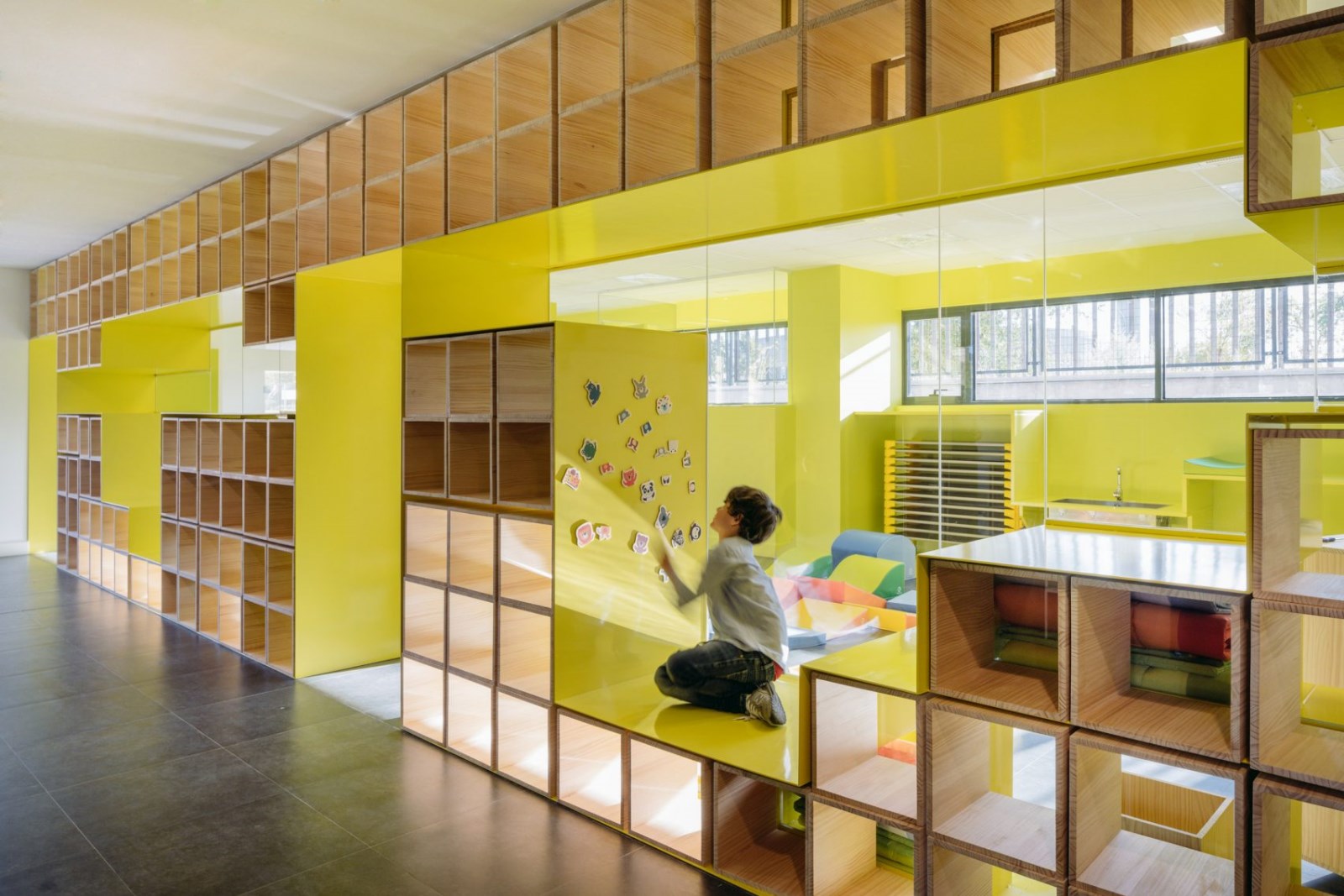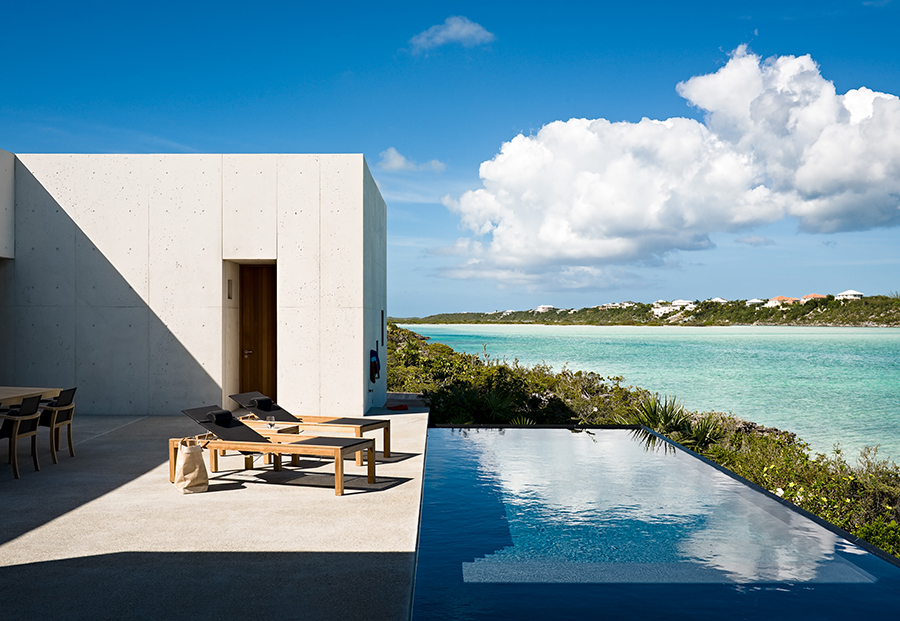Ku.Be House of Culture in Movement MVRDV + ADEPT
2016-09-02 09:30
架构师提供的文本描述。3200平方米的Ku.Be运动文化之家是为弗里德利克斯贝格市设计的,作为直接社区和哥本哈根更广泛地区的一个协调中心;人民自己可以拥有这一中心,并根据其使用者的具体需要和需要发展其方案。该项目是一种新的类型学,它是根据对一项仅要求建造一座将人们聚集在一起并提高生活质量的建筑物的答复而发展的。作为回应,MVRDV和“老手”回答说,它将戏剧、体育和学习融为一体,在这个空间里,身体和思想被激活,以促进每个人更健康的生活,无论年龄、能力或兴趣如何;建立人与人之间的联系,否则就不会彼此联系。
Text description provided by the architects. The 3200 m2 Ku.Be House of Culture in Movement was designed for the municipality of Frederiksberg as a focal point for both the immediate community and also the wider area of Copenhagen; one that the people themselves could take ownership of and that would evolve its programme based on the specific wants and needs of its users. The project is a new typology, developed out of the response to a brief that solely asked for a building that would bring people together and improve the quality of life. In reply MVRDV and ADEPT answered with one that blends theatre, sport and learning into a space where body and mind are activated to promote a more healthy life for everyone, regardless of age, ability or interest; creating links between people that wouldn’t otherwise connect with each other.
Concept Diagram
概念图


构成Ku.Be的六个主要卷,每卷都有各自的节目,都用独特的颜色和材料包覆,清楚地界定了建筑物内的颜色和材料;从外面可以看出,这些形状是在碎片化的瓷砖正面暗示的。MVRDV的联合创始人JacobvanRijs解释说:“我们设计Ku.e是为了鼓励意想不到的事情。”他说:“大容量可供举行表演或公开会议,较小的可作展览或辩论之用。速度快的房间非常适合跳舞,或跑酷;禅宗的房间给你瑜伽或冥想的对比。这是在这些卷之间,真正的乐趣将发生;空间,我们暗示使用,但这将成为完全用户定义。“
The six primary volumes which make up Ku.Be, each with their own programme, are clad in a unique colour and material, clearly defining them within the building; from outside these shapes are hinted at in the fragmented tile façade. “We designed Ku.Be to encourage the unexpected,” explains MVRDV co-founder Jacob van Rijs. “Larger volumes are suited to hold performances or public meetings, smaller ones can be for exhibitions or debates. The fast-pace rooms are perfect for dance, or parkour; and zen rooms give you the contrast of yoga or meditation. It’s between these volumes where the real fun will happen though; spaces where we hint at a use, but which will become entirely user-defined.”
© Adam Mørk
亚当·莫尔克


通过建筑物的路线集中于发展和鼓励其他形式的运动。迷宫让人们从第二层到第三层爬过立方体的三维网络,或者他们可以选择鼠标夹,这是一个垂直的迷宫。一个横跨整个大楼几层的网络,让用户从一层爬到另一层-悬挂在空隙上-滑梯和消防队员杆提供了一种快速返回的方法。“在Ku.be,我们试图扭转你对一栋建筑的平均体验,”一位老手的联合创始人马丁·克罗(MartinKrogh)说。“如果不是这样的话,一次简单的、盲目的穿越建筑的旅程就会变成对运动的探索和发现。”在这里,你定义了你想要的路线:攀岩,滑动,爬行…跳“为了满足所有的能力和年龄,提供了更容易和更标准的移动方式,但即使是在整个Ku.Be保持一个视觉连接。
The route through the building focuses on developing and encouraging alternate forms of movement. The Labyrinth gets people on their hands and knees climbing through a three dimensional network of cubes from the second to third floors; or alternatively they could take the Mousetrap, a vertical maze. A net which spans several floors throughout the building, lets users climb up from floor to floor – suspended over the voids – and slides and fireman poles offer a fast way to get back down. “In Ku.Be we tried to turn your average experience of a building on its head,” tells ADEPT co-founder Martin Krogh. “What would otherwise be a simple, mindless journey through the building turns into an exploration and discovery of movement. Here it’s you that defines the route, however you want: climbing, sliding, crawling … jumping.” To cater for all abilities and ages, both easier and more standard ways of moving around are provided but even then a visual connection is maintained throughout Ku.Be.
Zones Diagram
区域图


城外园林与城市境界之间形成了联系,在表达八卷书和发生在其中的活动中起着重要的作用。多样化的景观-一个由不断变化的声音、灯光和气味组成的微气候系统-与集成的幻灯片无缝地融合在一座小山中-延伸到花园里,并在室外的圆形剧场中结束。
The urban gardens outside form the connection between Ku.Be and the urban realm, playing an important role in expressing the eight volumes and the activities happening inside. The diverse landscape - a system of microclimates with changing sounds, lights and scents which blends seamlessly into a hill with integrated slides - reaches out into the gardens and ends in an amphitheatre outside.
© Adam Mørk
亚当·莫尔克


通过成为弗里德利克斯堡城市景观的延伸,并在一定程度上融入社区,文化与运动之家希望成为社区内进一步发展的孵化器。
By becoming an extension of the urban landscape of Frederiksberg and integrating the community to such an extent, the House of Culture and Movement looks to become an incubator for further development within the neighbourhood.
Ground Floor Plan


1st Floor Plan
一楼图则


2nd Floor Plan
二层平面图


3rd Floor Plan
三楼图则


Be是MVRDV在丹麦完成的第三个项目。Ragnarock是一座青年文化、流行音乐和摇滚乐博物馆,于今年4月在附近的Roskilde和Fr silos(将两个老筒仓改建为住房)于2005年在哥本哈根建成。
Ku.Be is MVRDV’s third completed project in Denmark. Ragnarock, a museum for youth culture, pop and rock music opened in April of this year in nearby Roskilde and the Frøsilos, a conversion of two old silos into housing, was completed in Copenhagen in 2005.
© Adam Mørk
亚当·莫尔克


在过去的几年里,除了Ku.Be之外,阿特还建造了一些文化和教育建筑。其中包括瑞典法伦的Dalarna媒体图书馆、丹麦欧登塞的Cortex和丹麦Aalborg的UCN。
Aside from Ku.Be, ADEPT has completed a number of cultural and educational buildings within the last few years. Among these are Dalarna Media Library in Falun, Sweden, Cortex in Odense, Denmark and UCN in Aalborg, Denmark.
© Adam Mørk
亚当·莫尔克


MVRDV和A熟练公司通过与以下人员密切合作实现了该项目:Soeren Jensen工程师,他提供复杂的结构工程以支持富有远见的建筑;SLA景观建筑师,设计了Ku.Be周围的城市花园;Max Fordham LLP,以实现整个建筑的环境舒适性。Ku.Be之所以成为可能,是因为Realdania和Loa(Lokale-
MVRDV and ADEPT achieved the project through close collaboration with: Soeren Jensen Engineers who provided the complex structural engineering to support the visionary architecture; SLA landscape architects, who designed the urban garden surrounding Ku.Be ; and Max Fordham LLP to achieve environmental comfort throughout the building. Ku.Be was made possible by major contributions by Realdania and LOA (Lokale- & Anlægsfonden).


© Adam Mørk
亚当·莫尔克


































































Architects ADEPT, MVRDV
Location Frederiksberg, Denmark
Category Cultural Center
Area 3200.0 m2
Project Year 2016
Photographs Adam Mørk
Manufacturers Loading...































